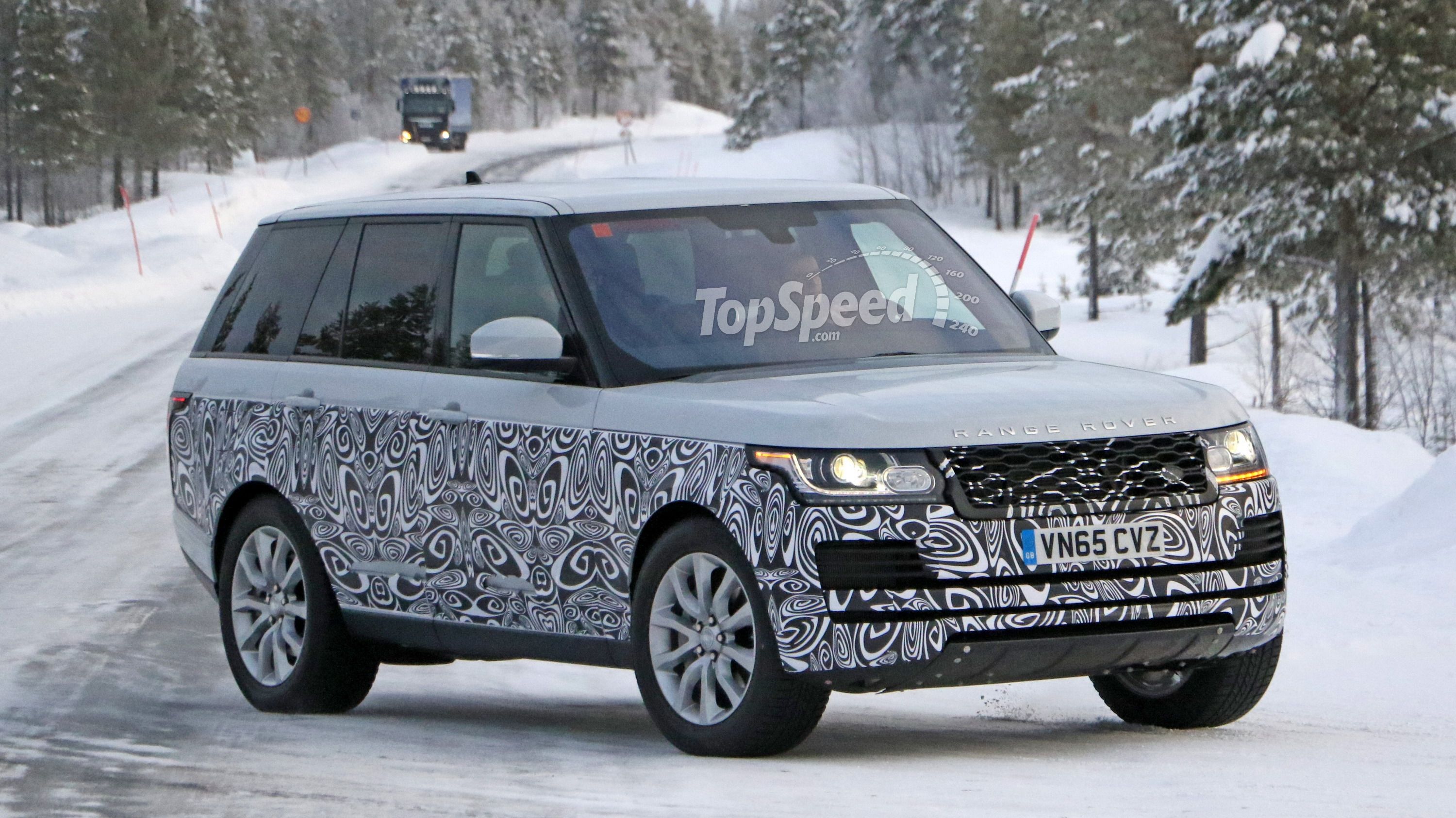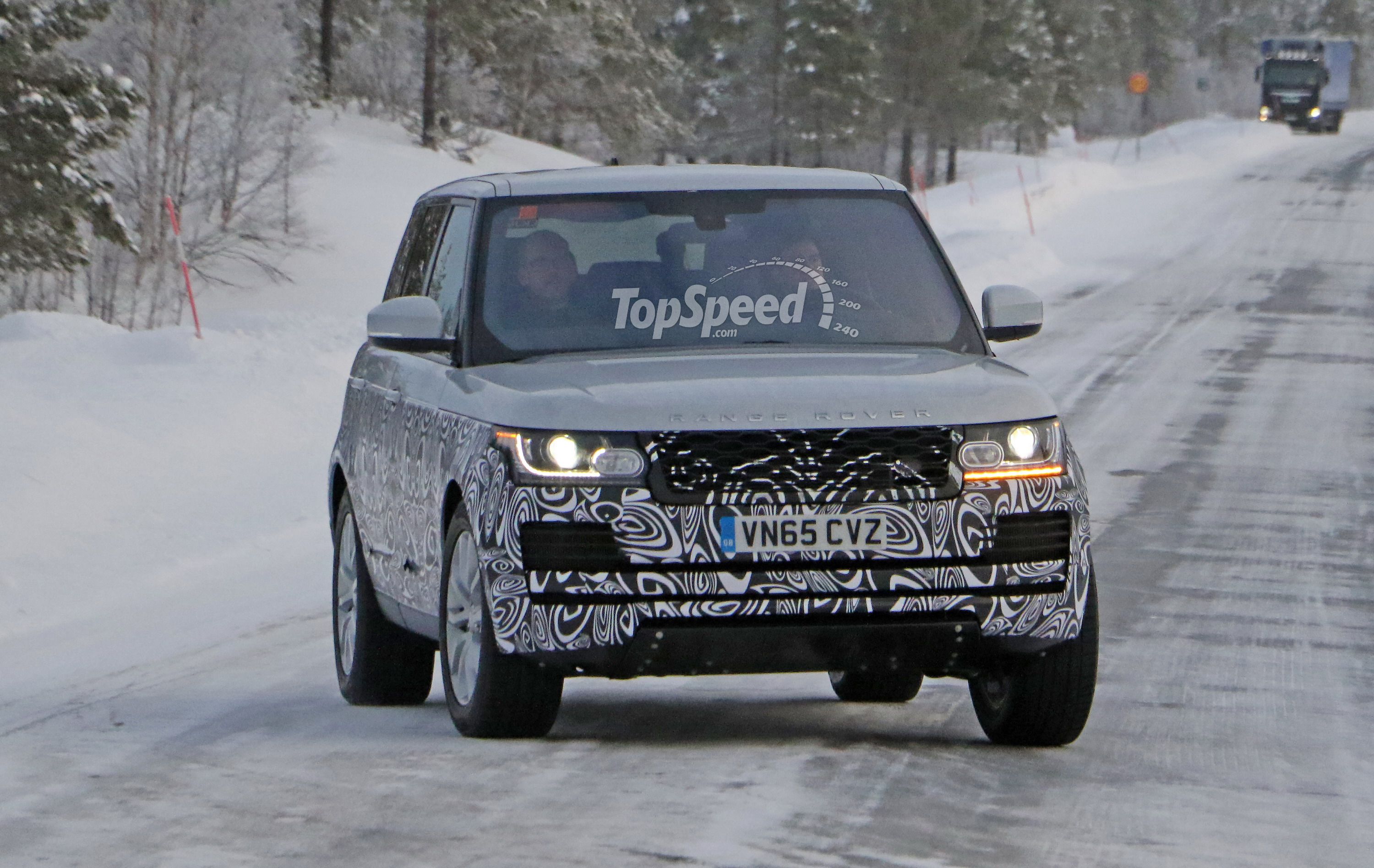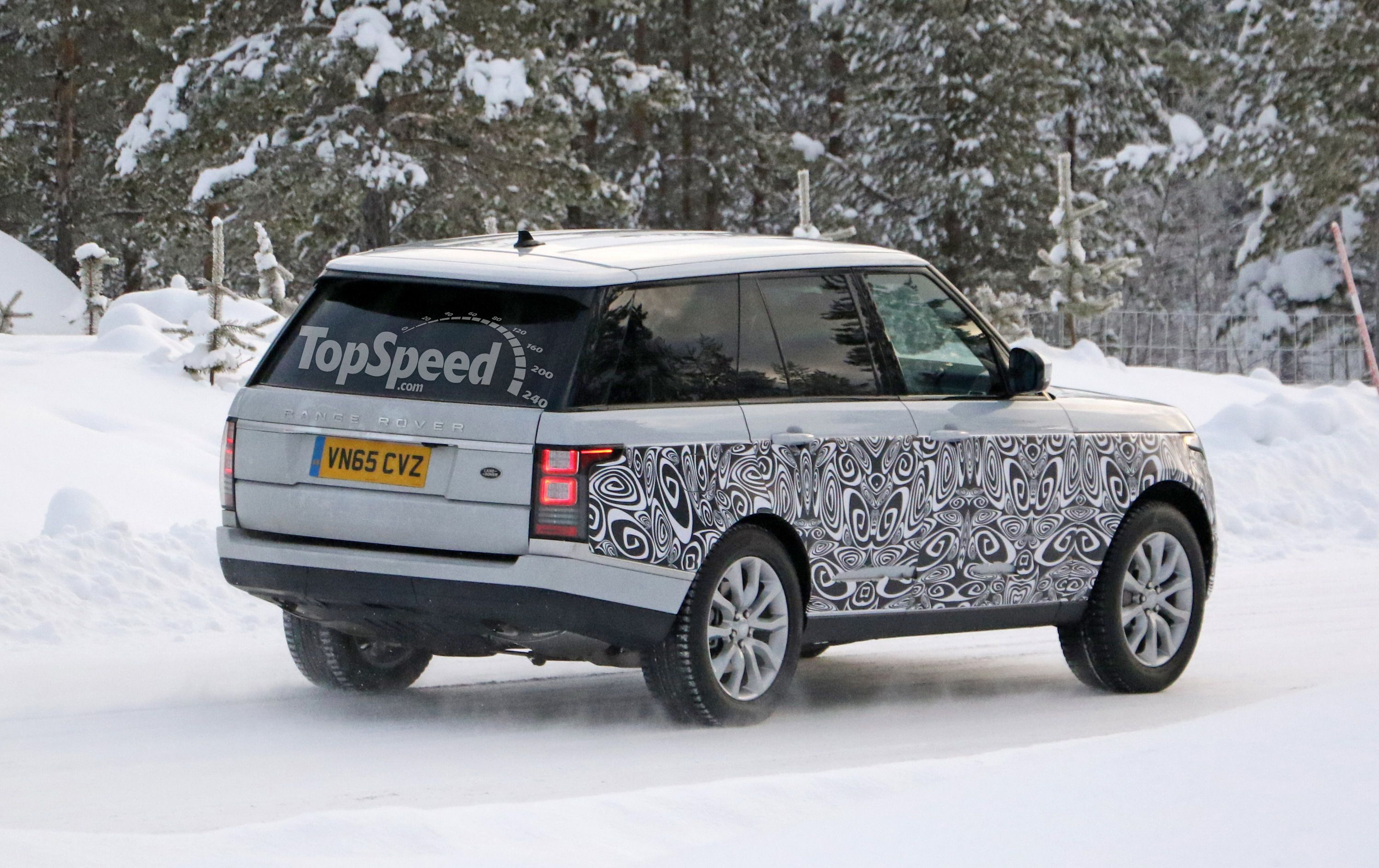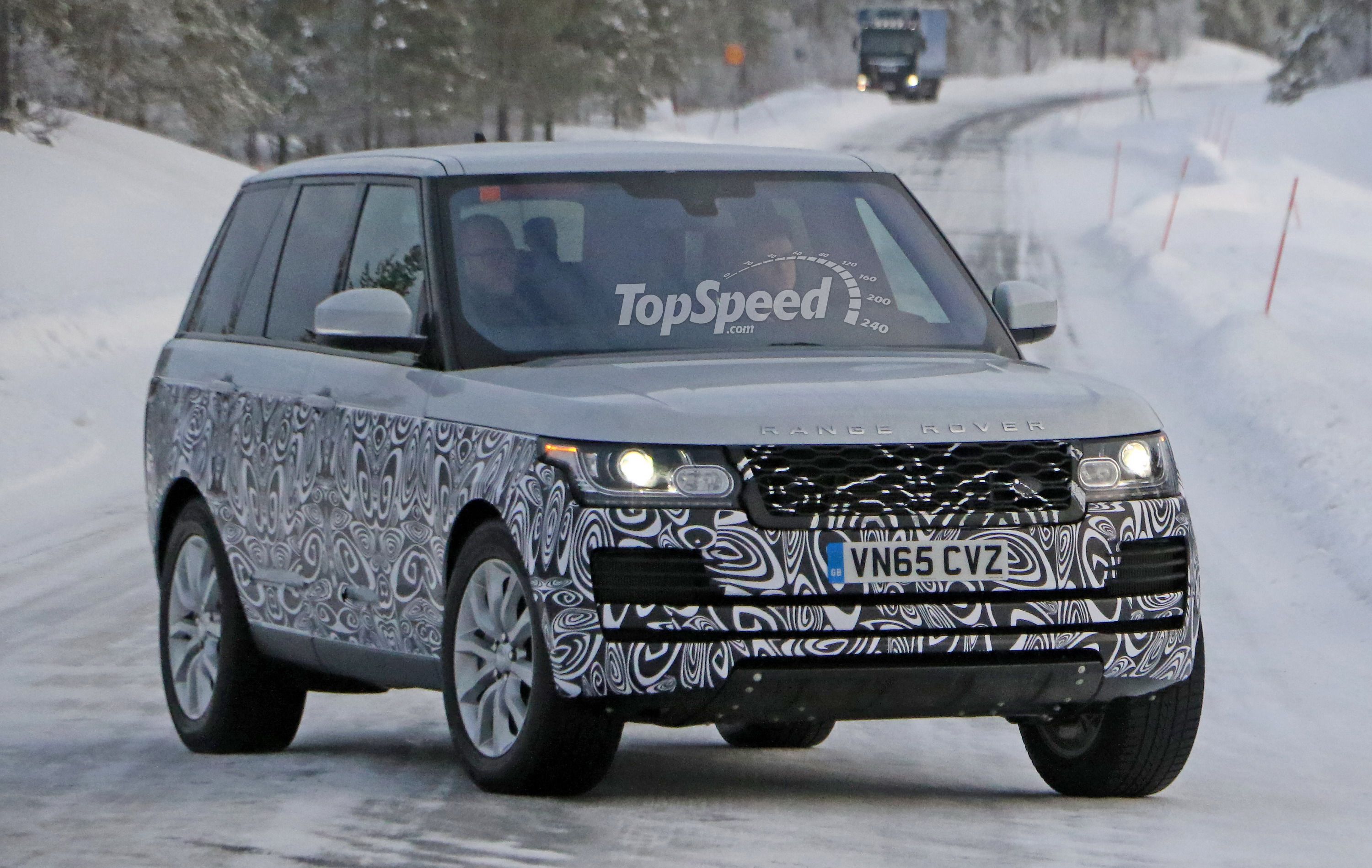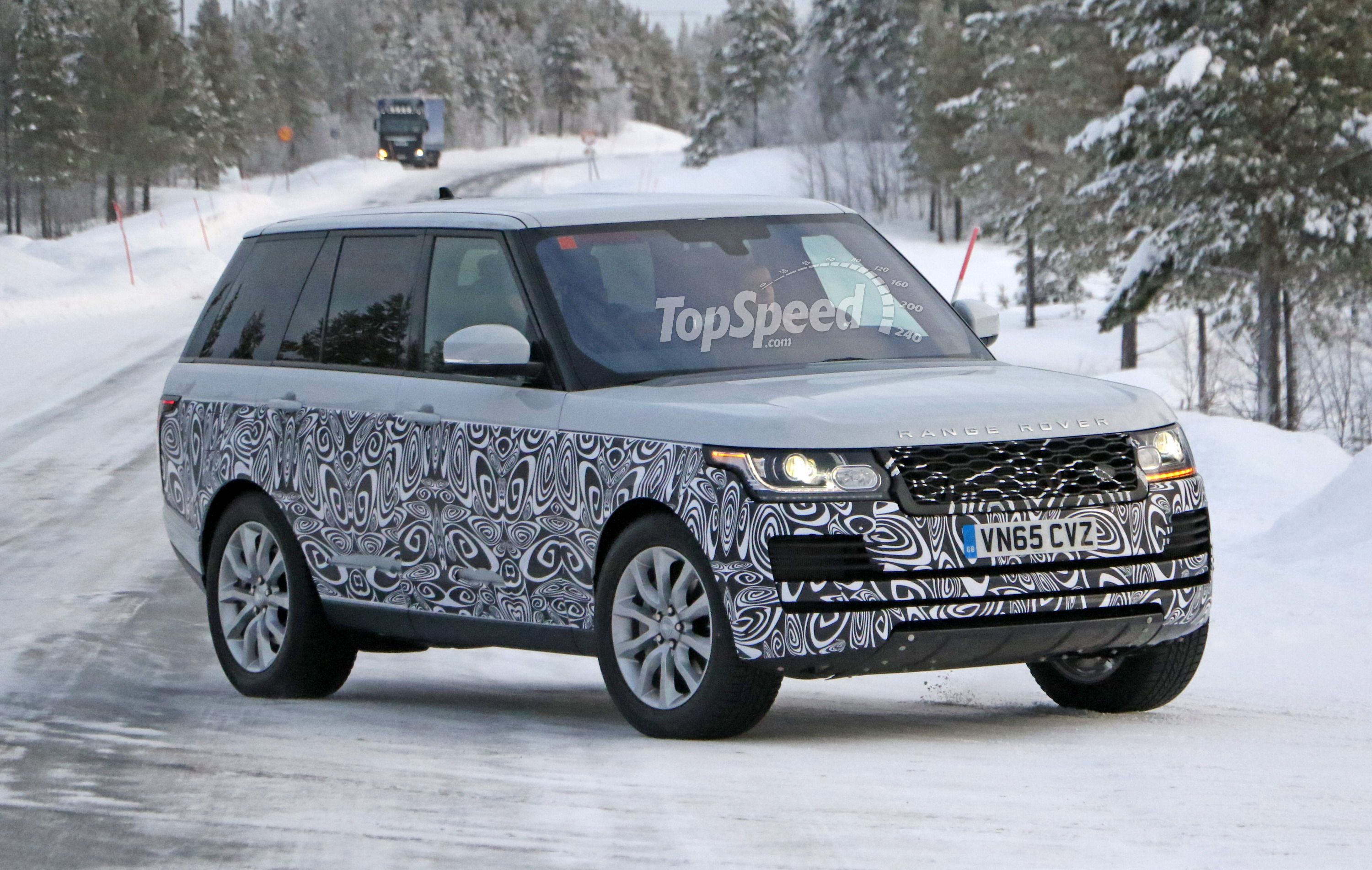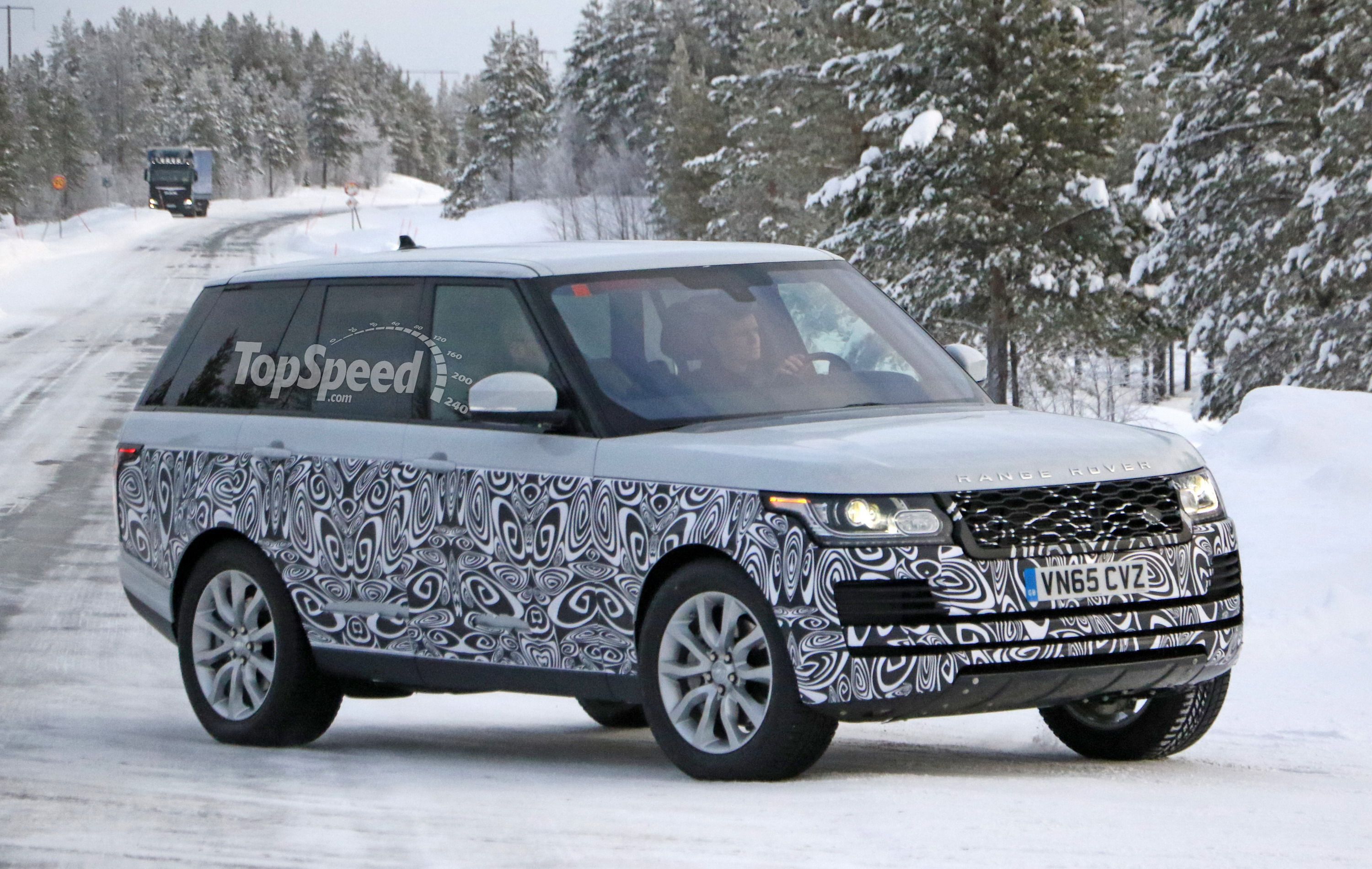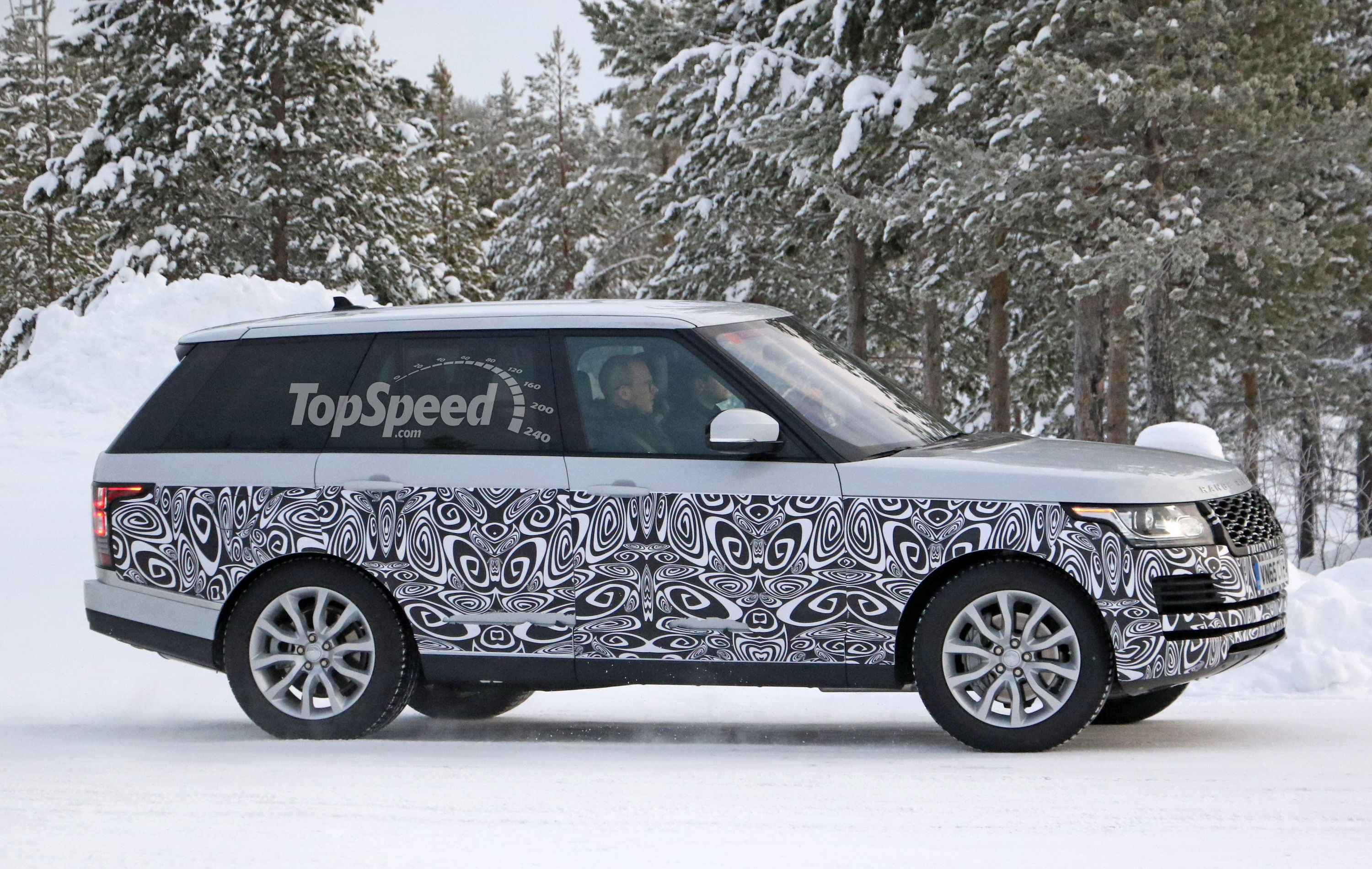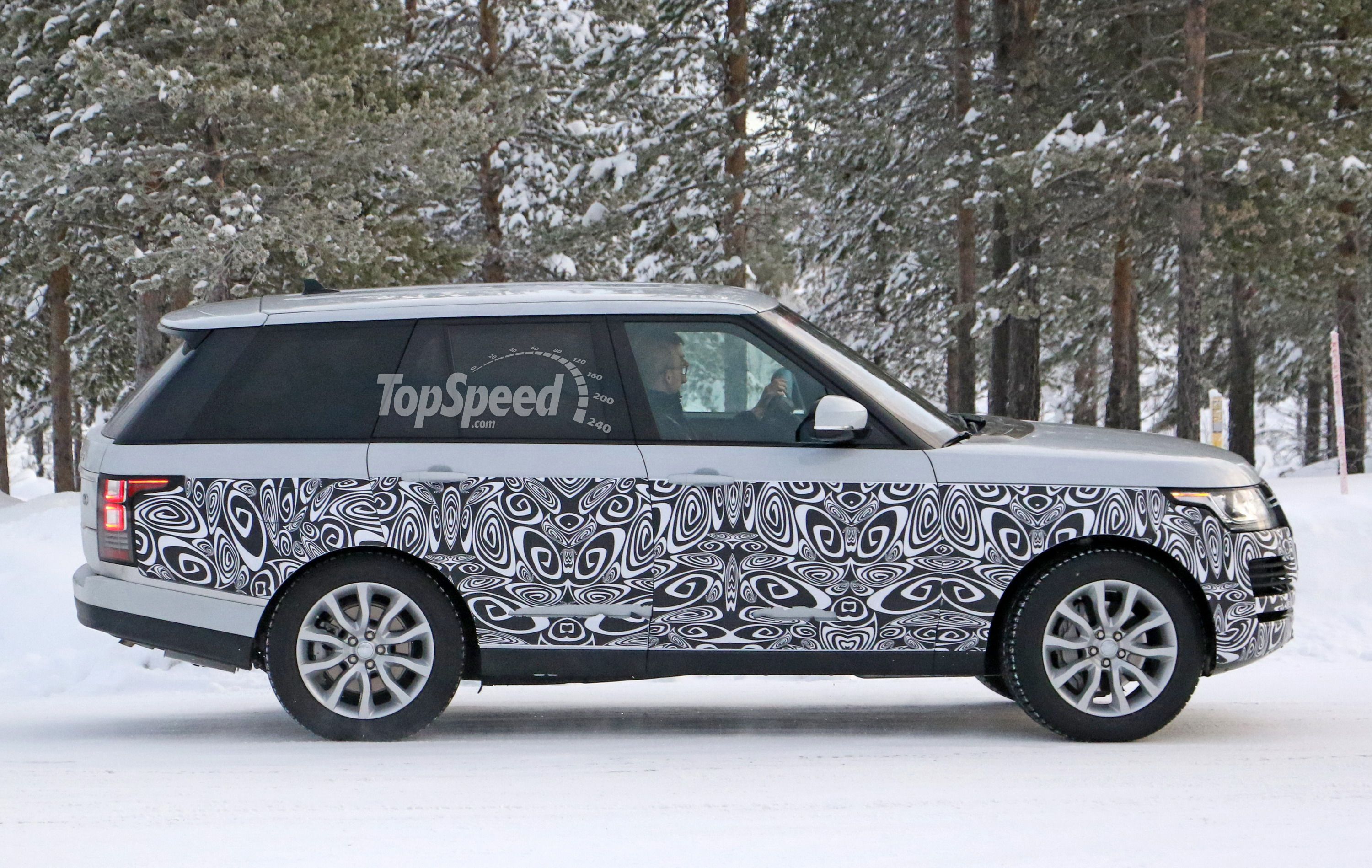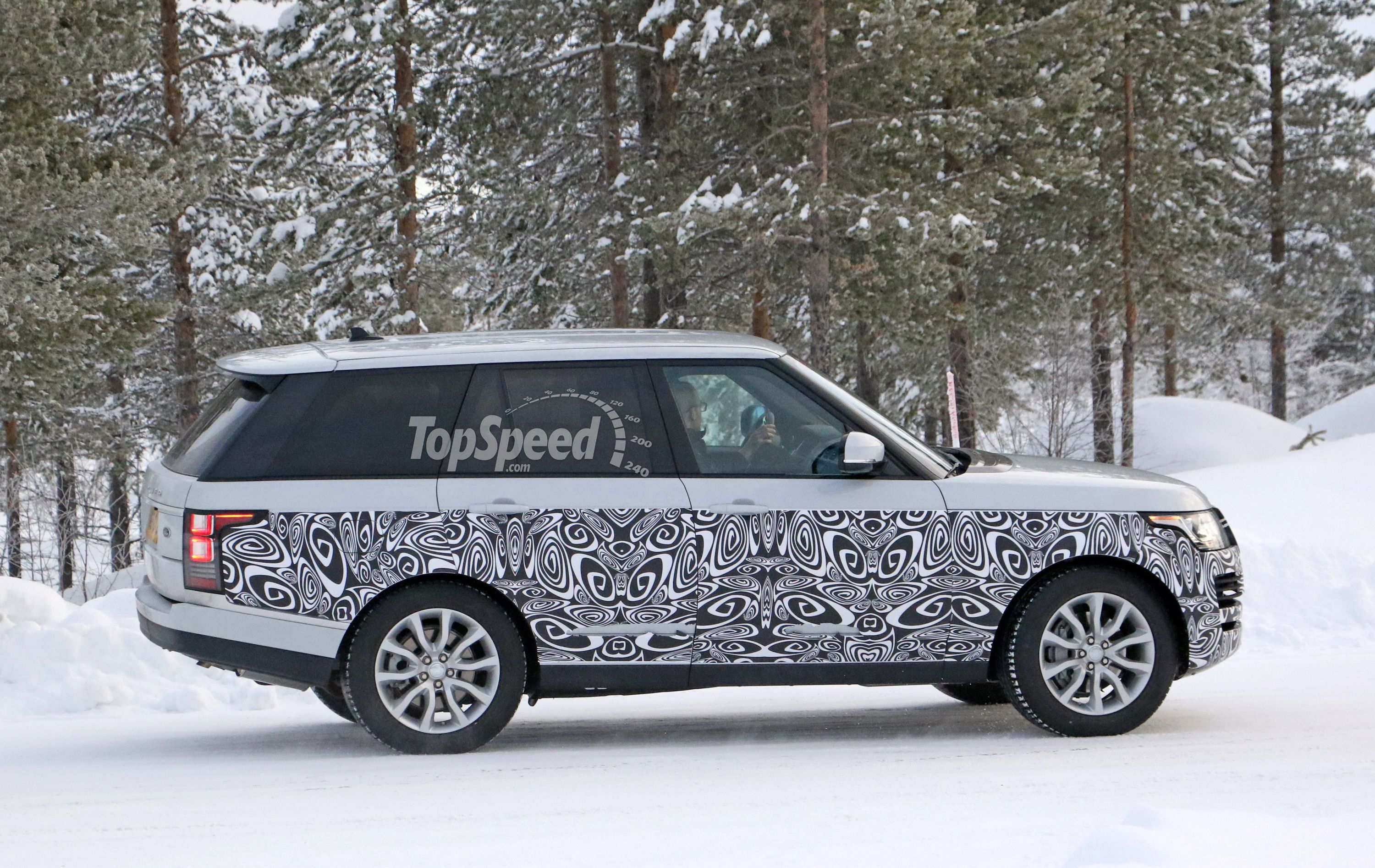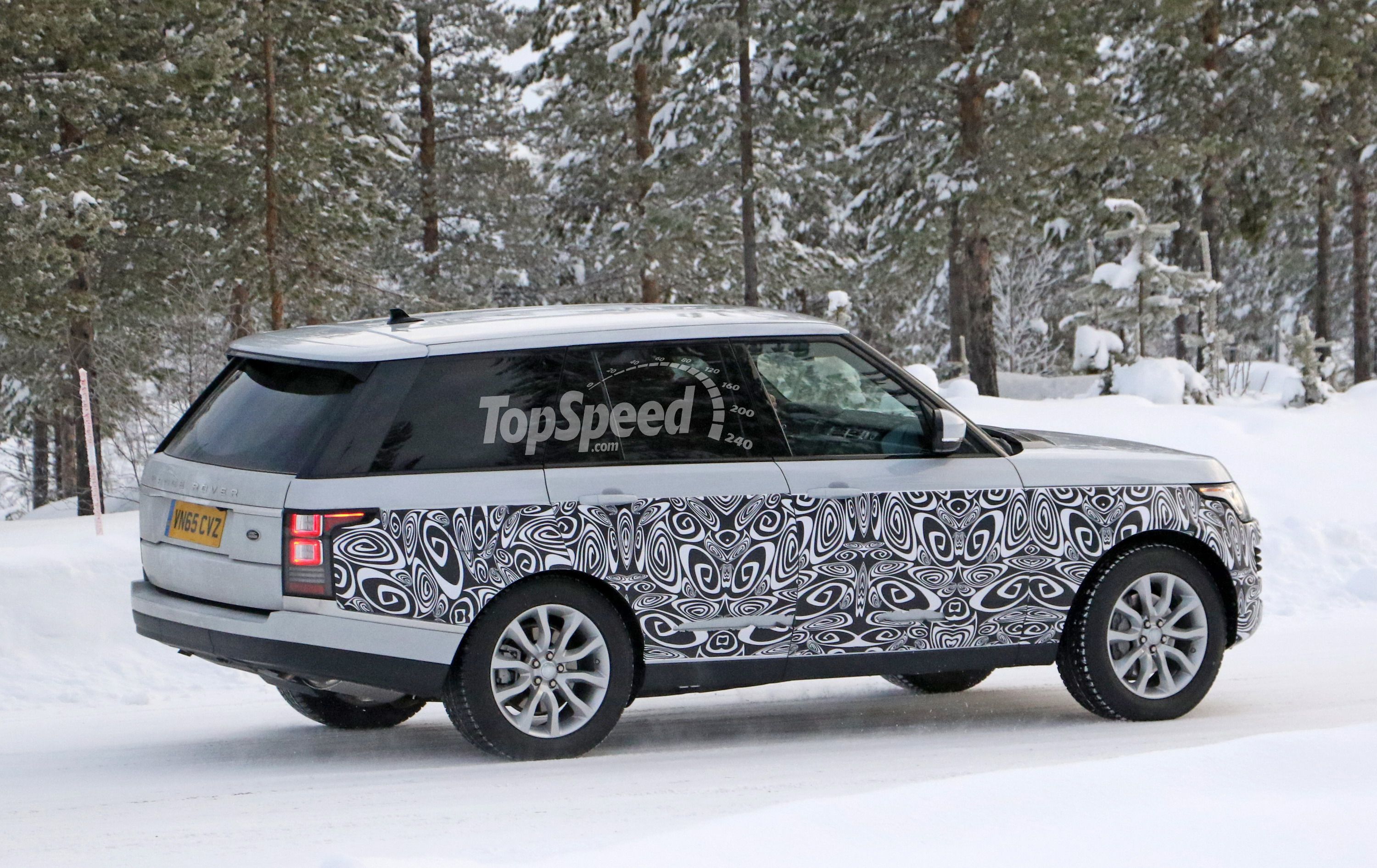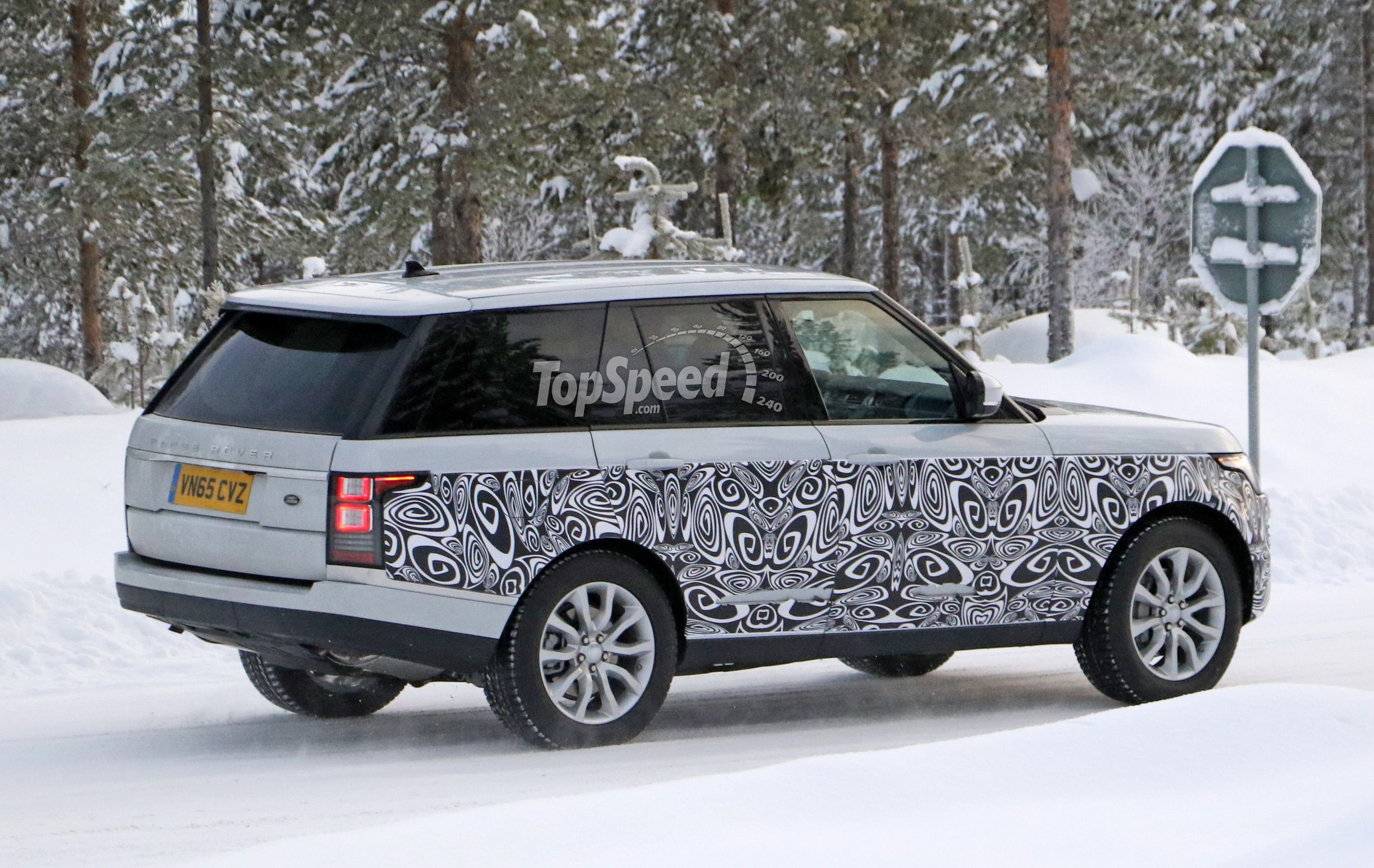Land Rover->ke46 gave the Range Rover->ke469 a complete redesign for the 2013 model year. That redesign included a much lighter all-aluminum body structure that, when combined with other changes, dropped a whopping 771 pounds from the overall weight of the previous generation SUV.->ke145 With several engine options that offered a range of horsepower from 250 to more than 500, the then-new Range Rover was better than ever.
Now, with just three years under its belt, the newest generation is slated to go under the knife for a minor facelift. The images you see here are of the facelifted model doing some real world testing. As you can see, only about forty percent of the SUV is covered in camouflage, with all of the camo concentrated on the front and sides. So, what is JLR->ke39 trying to conceal behind this little bit of cover?
We don’t expect JLR to change up a whole lot with the luxurious->ke505 and sporty->ke506 look of the Range Rover. Keep on reading for what we can see from the spy shots->ke166 and what might be lurking under that little bit of camo.
Continue reading to learn more about the facelift Land Rover Range Rover.
2016 Land Rover Range Rover
- Make: Array
- Model: 2016 Land Rover Range Rover
- [do not use] Vehicle Model: Array
Spy Shots
February 3, 2016 - First testing session
Exterior
The most obvious change that we can see in the spy shots comes in the form of a different grille. In the current model, the grille has three horizontal splitters with hexagon cutouts on each side. On the model in the spy shots, the grill has been reworked with a honeycomb design. That new grille is painted black on this test mule, but I have a feeling it will end up chrome by the time it makes production. Down below, the air vents below the headlights remain, but it looks like they extend down to the horizontal opening above the fog lights, giving the front fascia a sportier look. Even farther down, the front splitter or skid plate is about the same size as on the current 'Rover, but has been dropped down about an inch, providing a gap between it and the fascia. Outside of these few changes, everything else – like the hood and headlights – appears to remain the same.
To the side, the camo is concealing any changes that may exist. As you can see, those gills on the front doors may be a thing of the past once the facelifted Range Rover debuts. Then again, Land Rover’s preppers may have just done a good job of covering them up with camo. The other thing I noticed is that the rest of the side, including the side skirts, look to be almost completely smooth. This would mean that Land Rover decided to tone down that lower body line and that plastic trim below the gills on the door.
To the back and up top, there are no changes to speak of. The same taillights and rear overhang remain, and the rear fascia is identical to the current model. Then again, this isn’t surprising. As they say, don’t fix something if it isn’t broken, right?
Interior
Note: Current Land Rover Range Rover pictured here.
As of now, and changes to the interior are a complete mystery. Considering this facelift offers very little change to the exterior, I don’t suspect the interior will change much either. We may see the infotainment screen jump up in size by an inch or so, but if it does, JLR will have to change the insert that surrounds the infotainment screen to accommodate for the larger screen. The center console will still carry over into the rear seating area. I don’t expect any other major changes, but an updated digital instrument cluster isn’t out of the question. I do think that the Range Rover’s steering wheel will be refined a bit. I don’t think it’s too much to ask for touch-panel buttons as opposed to the normal buttons used on the current model.
Drivetrain
There probably won’t be any changes to the drivetrain, considering the engines were just recently reworked. The current model, in base form, offers a 3.0-liter, turbodiesel that pumps out 254 horsepower and 443 pound-feet of torque. The gasoline-powered 3.0-liter V-6 is supercharged and pumps out 340 horsepower and 332 pound-feet of torque. In HSE trim, that gasoline-sucker is tuned to pump out 380 horsepower. The Supercharged and Autobiography trims offer up a 5.0-liter monster of a V-8 that produces 510 horsepower and 461 pound-feet. All trims come with four-wheel drive with power sent to the wheels through an eight-speed transmission. To me, it doesn’t make sense for JLR to make any changes here, but if it does, expect only mild bumps in power.
Prices
With the minimal changes come to the Range Rover with this facelift, I don’t expect pricing to change from the current model. That means the base model should start out at $84,950, and the HSE trim should come in at $91,950. Supercharged trim levels should continue to start at $103,195, and the Autobiography trim should command $139,995, before options and taxes, of course.
In long-wheelbase form, the same prices should also carry over. The Supercharged trim will continue to start out at $109,195, the Autobiography at $144,995 and the range-topping SVAutobiography trim should command a whopping $199,495.
Competition
Porsche Cayenne
The Porsche Cayenne doesn’t offer quite as much room or cargo space as the Range Rover, but it still fall into the Luxury SUV category. The Standard Cayenne starts out at just above $61,000 and comes equipped with a 3.6-liter engine that pumps out 240 horsepower. This puts it right in line with the diesel-powered Range Rover, but at a significantly lower cost – roughly $23,000 cheaper. For those interested in comparing the supercharged trim, you can look at the Cayenne Turbo. It offers up 520 horsepower (10 more than the Range Rover in supercharged form) from a 4.8-liter V-8. It starts out shy of $115,000, which is about $10,000 to $12,000 more than the Range Rover.
Read our full review on the Porsche Cayenne here.
Mercedes-Benz G-Class
There aren’t too many luxury SUV’s that can actually compete with the Range Rover in all aspects including price, but the G-class almost fits well. For 2016, the G-class is taking on an update that includes the new 4.0-liter Biturbo V-8. That engine pumps out 422 horsepower and 450 pound-feet of torque, at a price of somewhere between $117,000 and $120,000. Price-wise, that plants the G-class between the Supercharged and Autobiography Range Rover. Granted, the exterior of the G-class is pretty boxy and nowhere near as sporty as the Range Rover, but it certainly holds its own off-road.
Read our full review on the Mercedes G-Class here.
Conclusion
I’m not surprised to see JLR thrown the Range Rover under the knife, as it is always a good idea to keep models fresh, encouraging new and repeat customers to purchase. I’m not so sure about that honeycomb grille we see in the spy shots, though. I sure hope that grille goes chrome before it gets thrown into production. Subjectively, I’m not sure a black, honeycomb grille will fit the Range Rover all that well. Either way, the Range Rover will continue with roughly the same look, and that we can all be happy about. I look forward to seeing the facelifted version without camo. Little changes are always nice. Now, if only I justify buying one of those long-wheel base SVAutobiography models, I would be all set.

